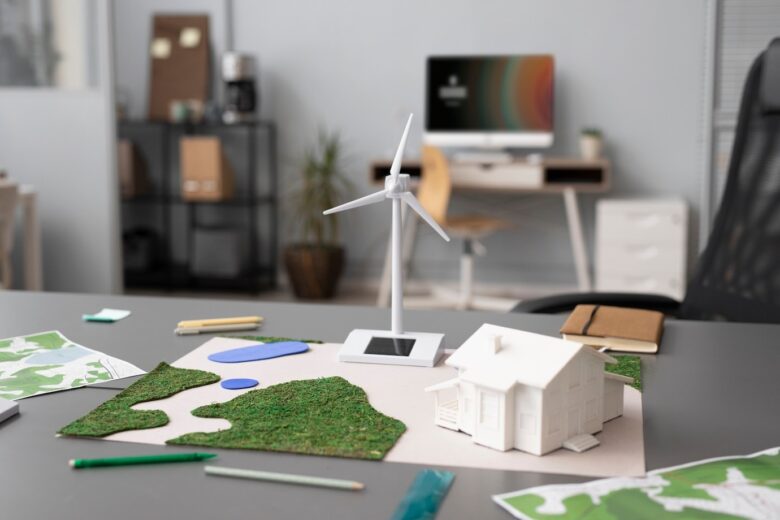Decarbonising real estate is no longer a choice – it’s an absolute necessity for any organisation aiming to future-proof its assets.
As governments around the world tighten environmental regulations and set ambitious carbon reduction targets, real estate plays a critical role in helping meet those goals.
The industry’s contribution to global carbon emissions is staggering—buildings are responsible for nearly 40% of worldwide CO₂ emissions.
This places immense pressure on the real estate sector to adopt strategies that reduce energy consumption and cut emissions drastically.
But where do you start? How can you achieve decarbonisation without compromising building performance or facing skyrocketing costs?
Key Points
- Decarbonisation of real estate is essential for reducing CO₂ emissions globally.
- Buildings account for nearly 40% of global carbon emissions, highlighting the sector’s significant impact.
- Advanced building physics and automation technology play a crucial role in achieving energy efficiency.
- Digital twins enable property managers to test and simulate energy-saving scenarios.
- Government legislation and investor expectations are accelerating decarbonisation efforts.
- Tenants increasingly prefer sustainable buildings, offering higher rental income potential.
Embracing Building Physics and Automation Technology

One of the most effective ways to decarbonise real estate is through the use of advanced building physics and automation technology.
Building physics focuses on how heat, air, light, and moisture move through a building, offering insights that are crucial for improving energy efficiency.
When combined with automated building management systems (BMS), property managers can monitor and adjust energy usage in real-time. Read more at https://resustain.com/
This brings us to the rise of digital twins—virtual models of buildings that allow managers to simulate different energy scenarios.
By using a digital twin, you can run tests and identify the most cost-effective ways to decarbonise your building before implementing any physical changes.
This eliminates guesswork and minimises risks, offering a much more strategic approach to energy management.
Retrofitting Strategies for Existing Buildings
Older buildings contribute significantly to carbon emissions due to outdated infrastructure. Retrofitting strategies can dramatically improve energy performance. Key approaches include:
- Upgrading insulation: Reduce energy loss and enhance thermal efficiency.
- Installing energy-efficient windows: Minimise heat gain and loss while improving natural light usage.
- Modernising HVAC systems: Adopt smart heating, ventilation, and air conditioning systems for optimal energy use.
These updates not only cut emissions but also improve occupant comfort and reduce operational costs.
Industry Trends Driving Decarbonisation
- Government Legislation: In response to climate change, governments worldwide have been tightening regulations. For example, the UK’s Net Zero Strategy aims to decarbonise all sectors of the economy by 2050, which includes retrofitting older buildings and ensuring new developments are energy-efficient from day one.
- Investor Expectations: There is increasing pressure from investors to prioritise Environmental, Social, and Governance (ESG) criteria. Sustainable buildings are becoming more attractive to investors, while assets that lag behind on decarbonisation may become stranded.
- Tenant Demand: Today’s tenants, especially corporates, are increasingly seeking out sustainable buildings that align with their own ESG goals. High-performing, energy-efficient properties command premium rents, while less sustainable buildings may struggle to retain tenants.
Leveraging Renewable Energy Sources

Integrating renewable energy systems into buildings is another practical step towards decarbonisation. Consider these options:
- Solar panels: Generate clean electricity and reduce dependence on fossil fuels.
- Geothermal systems: Harness earth’s natural heat for heating and cooling.
- Wind energy solutions: Install small-scale wind turbines for additional power generation.
These energy sources help achieve carbon neutrality while reducing long-term energy costs.
Measuring Progress with Data-Driven Tools
Tracking your decarbonisation efforts is vital to ensure alignment with goals. Use data-driven tools and software to measure key performance indicators (KPIs) such as:
- Energy consumption per square meter.
- CO₂ emissions saved annually.
- ROI on energy efficiency upgrades.
| KPI | Measurement Metric | Goal |
| Energy consumption | kWh per square meter | Reduce by 20% annually |
| CO₂ emissions reduction | Metric tons of CO₂ saved annually | Achieve net-zero by 2030 |
| Upgrade ROI | Payback period in years | Less than 5 years |
These insights enable better decision-making and fine-tuning of strategies.
Collaboration with Stakeholders for Sustainable Solutions
Decarbonisation is not a task for building owners alone. Collaboration with key stakeholders—architects, engineers, contractors, and tenants—is essential for success. Engaging stakeholders early in the process helps align goals, address potential challenges, and foster innovative solutions.
Key strategies for collaboration include:
- Integrated design processes: Work with architects and engineers to incorporate energy-efficient features during the design phase.
- Green leasing agreements: Partner with tenants to share the responsibility of sustainability measures.
- Community partnerships: Collaborate with local governments and organizations to access incentives, funding, and resources for green initiatives.
By working together, stakeholders can create a unified approach to decarbonisation, ensuring that goals are achieved efficiently and effectively while benefiting all parties involved.
The Path to a Sustainable Future

The decarbonisation journey is not without challenges, but the rewards are significant.
By adopting an integrated approach that leverages both technology and scientific principles, you can cut carbon emissions, reduce energy costs, and boost property values.
Beyond financial gains, decarbonisation enhances your reputation, attracts responsible investors, and aligns your assets with evolving market expectations.
The future is clear: decarbonisation isn’t just about meeting regulatory requirements—it’s about staying competitive in an increasingly sustainability-driven market while contributing meaningfully to global environmental goals.
FAQs
Q: What is the first step to decarbonising my building?
Start by conducting an energy audit to identify inefficiencies and prioritize upgrades that offer the highest ROI.
Q: How do I finance decarbonisation projects?
Consider green financing options such as sustainability-linked loans, government grants, or incentives for energy-efficient upgrades.
Q: Is decarbonisation only relevant for large properties?
No, small buildings can also benefit significantly from energy efficiency measures and sustainable practices.
Q: How long does it take to see the benefits of decarbonisation?
The timeframe varies but most upgrades show measurable results in energy savings within 1-3 years.


